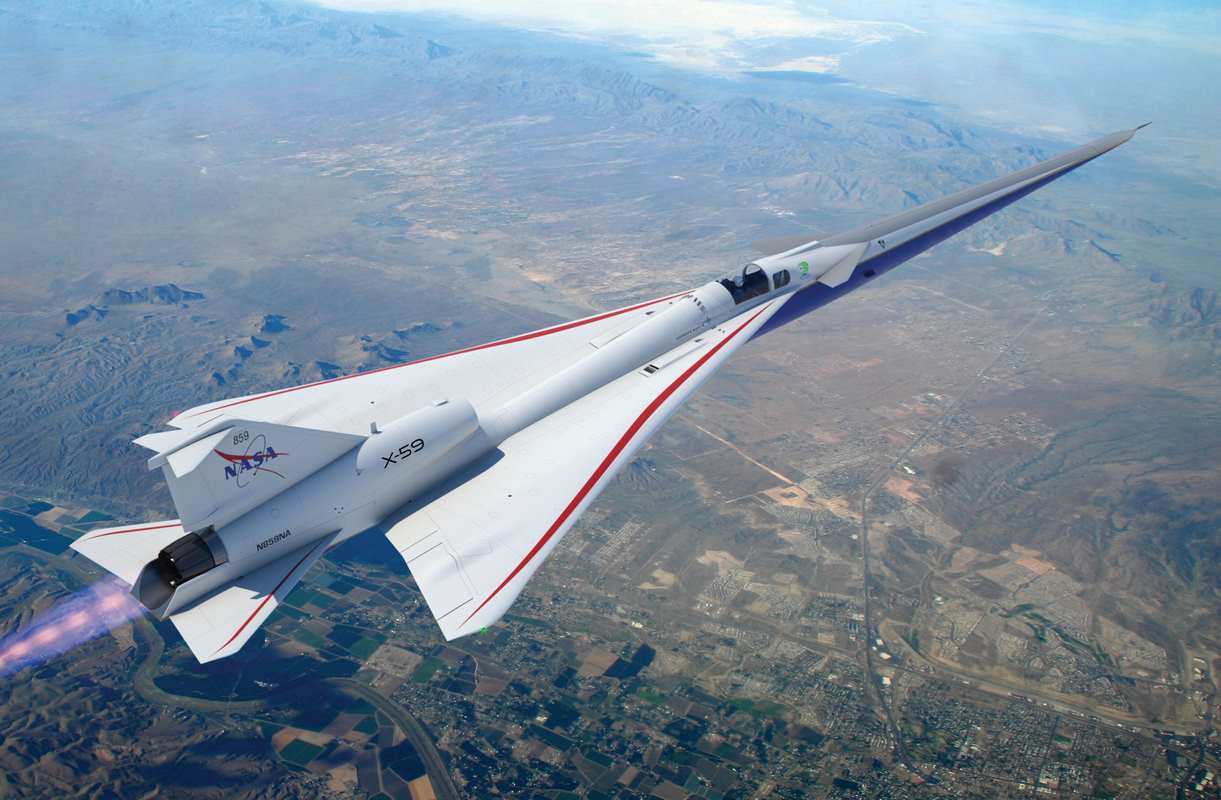Supersonic travel is once again in the spotlight after nearly two decades of absence since Concorde retired in 2003. US-based startup Boom Supersonic has achieved a major milestone with its demonstrator jet XB-1, which successfully broke the sound barrier without producing disruptive sonic booms. This achievement lays the foundation for the development of Overture, a modern passenger supersonic aircraft widely dubbed the Son of Concorde.
A New Era of Fast Aviation
Overture is designed to carry between 60 and 80 passengers at cruising speeds of Mach 1.7, or more than 2,100 km/h. Its range of nearly 7,900 kilometers allows transatlantic routes such as London to New York to be completed in just 3.5 hours. The aircraft’s aerodynamic design uses lightweight composite materials and energy-efficient engines, and it is built to be compatible with sustainable aviation fuel (SAF).
Unlike Concorde, which was notorious for its loud sonic boom, Boom emphasizes a new technology called “Boomless Cruise.” This innovation minimizes shock waves so they are not heard on the ground, making the aircraft more acceptable to noise regulations.
XB-1 Demonstrator’s Breakthrough
Before moving on to Overture, Boom tested its technologies through XB-1, a one-third scale demonstrator nicknamed “Baby Boom.” The aircraft conducted its maiden flight in March 2024 and made history in January 2025 by reaching Mach 1.1 at 35,000 feet. This achievement made it the first privately built civilian aircraft to break the sound barrier.
In February 2025, XB-1 reached another record with Mach 1.18, or about 772 mph, at over 36,000 feet. Remarkably, these flights took place without creating disruptive sonic booms, thanks to advanced simulations and Mach cutoff algorithms developed by Boom. With its mission accomplished, XB-1 was retired and will be displayed at Boom’s Colorado headquarters as a symbol of a new era in supersonic travel.
Strong Airline Demand
Global airlines have shown strong interest in Overture. Boom has already secured 130 orders from carriers including United Airlines, American Airlines, and Japan Airlines. This demonstrates a real market demand for faster long-haul travel, especially for premium intercontinental routes.
The US government has also paved the way by lifting the decades-long ban on civilian supersonic flights over land. The Federal Aviation Administration (FAA) is now working on updated noise standards that could enable supersonic aircraft like Overture to operate legally in domestic airspace. This regulatory shift represents a major opportunity for Boom to launch its aircraft into commercial service.
Production at the Superfactory
To bring Overture to life, Boom is building a state-of-the-art manufacturing hub called the “Superfactory” in North Carolina. This facility will serve as the main assembly site for the aircraft, with production scheduled to begin next year. Boom expects to receive full certification before 2030, with the first commercial flights projected between 2029 and 2030.
Boom’s CEO, Blake Scholl, has stated that the company’s mission is to make supersonic travel more accessible. Unlike Concorde, which was notorious for its extremely high ticket prices, Overture is expected to offer fares comparable to current international business class tickets. This strategy aims to expand supersonic travel beyond an elite few to a much wider market.
Balancing Speed and Sustainability
Despite the optimism, Boom still faces significant challenges. The aviation industry is increasingly focused on carbon emissions and sustainability. Boom’s claim that Overture will run on SAF is critical to ensuring the aircraft is not only fast but also environmentally responsible.
Competition is also rising, with NASA’s X-59 program aiming to pioneer quiet supersonic travel, along with European startups developing their own supersonic and suborbital aircraft concepts. Yet, the XB-1’s successful flights provide concrete proof that Boom has the technical expertise to deliver.
The revival of supersonic travel is no longer just nostalgia for the Concorde era but a tangible step toward the future of global air transport. Overture represents more than speed; it embodies efficiency, sustainability, and inclusivity. The world now waits to see whether the Son of Concorde can truly redefine intercontinental travel in less than a decade.









